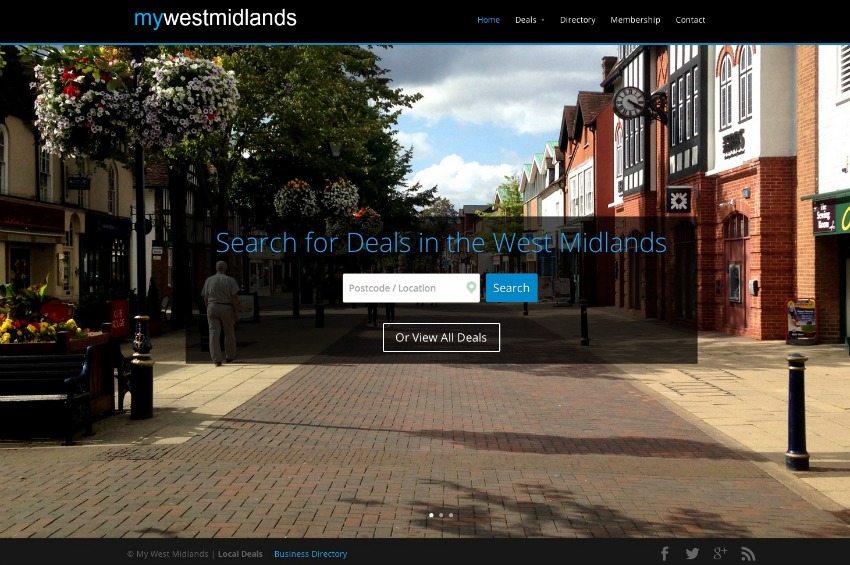Using Website Templates
Designing your website takes time and effort and many people try a few DIY methods before they realise a professional designer is the way to go. There are plenty of DIY websites out there that look as good as professional designs but most of them aren’t based on standard design templates. Using standard design templates rarely provides a result which is unique, stands out and best represents your brand.
There are many reasons you shouldn’t use a predesigned website template and below we’re looking and five key elements which show exactly with a design template is bad for your business.
1. Limits Branding
Your website plays a key role in promoting your business and having somewhere to display clearly and concisely exactly what you offer. Using a generic pre-designed template is not an effective way of ensuring that your business stands out. Using a template which can be seen on hundreds of other websites is not going to make you recognisable. Even if you add custom logos and content, you will still have a design which makes people click past rather than engage. Starting from scratch allows you to present the image you want for your business with no interference from the predesigns of others.
2. Still Requires Customisation
If you have no design experience then you won’t be able to just click a button and get what you want, even with a template. You will still need to make some edits and dependent on the CMS you use and the template you choose. Tweaks will be required and the frustration they bring if you’re not experienced in this area can slow progress and take much more time and energy than you had planned. Without any design experience this process is complex and will probably end up costing more in time and effort than hiring a designer.
3. Templates are restrictive
Although there are hundreds, if not thousands, of design templates out there, they are still restrictive in what they can offer. Many template designers have licensing agreements in place which restrict exactly how many changes you can make and limit the ways in which you can use the website. Some templates also include a link back to the original designer which may not be something you want displayed on your site.
4. They Look the Same
As mentioned, you will find lots of people trying to do things DIY and this means it won’t be long before you spot at least one other site which looks very similar to yours. The last thing you want is to get lost in a sea of websites that look the same and unfortunately, even with your tweaks and changes, each template is not exclusively yours and you will find others that look the same.
5. SEO is Forgotten
The designers behind many pre-made templates are getting a little savvier in this area but it hasn’t always been the case. Plenty of designers simply haven’t got SEO in mind when putting together a set of pre-made templates. A professional designer working on a bespoke basis implants elements which effect SEO positively within their coding but in most cases, this isn’t true of the designers behind pre-designed templates.
6. Problems under the Surface
Most of the self-build websites on the market look great on the surface but a little digging shows a different story. Many of the self-build templates on the market trick customers into paying for free features and customization which a web designer would carry out naturally as part of their package. You may find yourself paying extra for elements you shouldn’t including SEO marketing and analytics.
7. All Style, No Substance
Many of The Web Surgery clients arrive with self-build websites which simply don’t do the job they need. They may look great, although this isn’t always the case, but they don’t have the functionality the customer needs. They may get plenty of first-time visitors but customer retention is a problem and as soon as problems are found with the functionality of a site, many customers simply don’t come back. The appearance of your website is only one small factor, behind the scenes hundreds of different processes need to be tested and perfected to ensure you deliver a user experience that ticks all the boxes, rather than just looks good but is completely no use.
8. Not Responsive
Though this is changing a little, many of the self-build templates and themes out there are not responsive and this is a disaster in 2014. Mobile web use is growing faster than anybody could have imagined and by 2017, it’s predicted over 90% of internet users will be accessing the web via their smartphones.
A responsive website adapts and changes to fit the screen size in question as well as changing elements to ensure fast loading on mobile phones and tablets. It allows your website to deliver an effective mobile user experience as well as the one delivered to computer users. Without a responsive design your website will look distorted, the wrong size or may even be impossible to read or access at all. As we’ve said, most templates do adapt to different screen sizes but what if you don’t like the changes? You should be as invested in your mobile design as your computer-based one but with a self-build design it is tough luck, you just have to live with it.
This is the case against website templates and why you are always better off with your own professional designer, working to your brief and ensuring your exact branding needs are met. You will get what you pay for with a self-build template and the same can be said of a properly build website by a professional. Yes, the initial cost may be higher but in the long term you will benefit from an adaptable, quality user interface which not only satisfies your customers but more than achieves its ROI.
Contact The Web Surgery
If you would like to know more or find out how we can help you then please call us on 020 8144 6540 or contact us at www.thewebsurgery.com/contact








